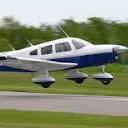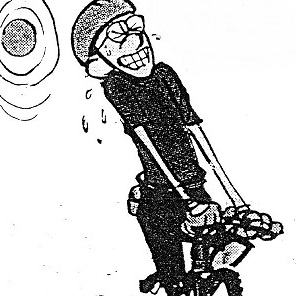texl1649 wrote:I just don’t see how a 2008 paper/data point, can project forward the net utilization after the intervening 12 years. I also don’t think it’s ok to just assume the aircraft can be easily extended via inspections/paperwork to 50% beyond their expected life, nor that utilization’s have in fact...been consistent with 1995-2005.
C'mon texl1649, did you actually read the report I linked or just the quote? From the C-17 analysis on page 24,
The PM monitors the critical aircraft components and assesses severity of usage on
those components through the U.S. Air Force Aircraft Structural Integrity Program (ASIP), which
is a preventive maintenance program of regularly scheduled inspections and replacement or
repair of various elements of the airframe. This is accomplished on an aircraft by aircraft basis.
While the airframe is not experiencing a decrease in service life due to GWOT operations, the
critical aircraft components are experiencing accelerated wear and tear due to GWOT
operations. Exposure to the sand environment, extreme heat, evasive maneuvering, and
steeper takeoffs and landings contribute to the increased wear and tear on the components of
the aircraft, most notably the engine, landing gear, and flight controls. The wear and tear on
these subsystems is mitigated by maintenance and repair, which drives up maintenance and
repair/overhaul costs in order to maintain aircraft availability. In summary, the C-17 ASIP
manages the fleet and identifies maintenance on the aircraft as needed to ensure each aircraft
reaches its 30,000 hour service life.
Usage data at the asset level for C-17 aircraft is available in the Reliability and
Maintainability Information System (REMIS), which holds usage data for Air Force aircraft. The
C-17 program does not have an automated fatigue measurement tool that tracks fatigue on the
airframes, so an estimate of fatigue must be applied in the methodology when operational and
mission demands warrant that fatigue be incorporated within the calculation. Since the PMO
has determined that fatigue currently has not posed a threat to the service life of the C-17 fleet
since the aircraft are not operating beyond their design life operating boundaries, fatigue is
estimated to be zero. C-17 engineers have noted that in the future, based on changes in
mission profiles and operating conditions, fatigue could pose an impact on the service life and
an estimate of the impact would need to be incorporated in the methodology.
Predicting aircraft useful life is core business for the USAF. They have a fleet of legacy aircraft and have literally done this for generations. It isn't like AMC is coming in to this blind, they are the operator and maintainer of the aircraft and have been for 27 years. The C-17 PMO is actively monitoring the jet and was doing so in 2007 when this analysis was completed. I highly doubt that they have stopped doing this.
texl1649 wrote:Note that the people saying that in 2008, and 2015, won’t be handling such a program in 2025-35.
A frankly stupid statement. What you asserting is that these people didn't do their jobs, or deliberately misrepresented, because they felt they wouldn't be around in that timeframe to take the flak for it. The same could be said for the pilots flying the aircraft, they must be deliberately overstressing the jet because they don't care about the pilots who will fly the aircraft after them, or the people who built the aircraft didn't do a good job because they were never going to have to fly in it. I don't work that way nor have I worked with people who have that mindset. I expect you would be insulted if someone suggested the same thing to you and I see absolutely no justification for claiming that these people had those considerations in mind at the time.
texl1649 wrote:Finally, much of that analyses was back when USAF was still buying C-17’s, but of course didn’t want Congress to force ‘too many’ into their future procurement budgets. Yes, politics, but again the TACAIR R&D and shiny new toys were/are priorities.
This point is irrelevant. Whether the USAF was receiving aircraft or not doesn't matter to their estimation of how long the aircraft will be able to function. The USAF ended up with significantly more aircraft than they expected so not sure why having more aircraft would be a bad thing for predicting and managing overall fleet life and hours.
texl1649 wrote:Yes, the C-5 has been a...longtime fixture. Again, it’s tough to really make that comparison though; it took over 20 years for the real C-5B program for the originals, and then of course the laborious C-5M program, and for several decades load planners scheduled 2 when 1 was needed to hope one would be mission capable that day. If anything, I’d note the C-141 and C-5 programs are an argument against...”well the C-17 will live a lot longer at current op tempo rates with just some increased maintenance past it’s projected/design service life.”
Yet the C-141 did continue on long past its initial planned service date and hour usage with the fleet getting a SLEP. The C-17 is a more useful jet to the USAF than the C-141 given its cargo dimensions. The C-5 is a unique aircraft and I doubt the USAF will ever operate a similar sized aircraft again in the transport role, it would be hard to visualise a program for 60 to 80 aircraft to cover its replacement.
texl1649 wrote:Agree to disagree, respectfully. And while I respect the USAF fleet management capabilities, I again think all of their types have a certain component, and more as the type gets older that are hangar queens.
Without evidence to support your position though it isn't really respect. Instead of accepting the USAF and their fleet management capabilities, including references, you are basically saying you know best and they don't know what they are doing.
Fleet management isn't just a USAF thing. It is common across militaries around the globe whether it is tanks, ships or aircraft. The USN makes the same analysis on their DDGs, the US Army on their Abrams fleet. In the case of the USAF and the C-17 we know the fleet hasn't been used anywhere near as much in the way it was envisioned. The same with fighter jets where going on operations instead of training has significantly extended the life of a number of aircraft, such as the classic Hornet. The RAAF have flown and managed their fleet to have aircraft capable of surviving out to 2023 before replacement by the F-35. The lower hour aircraft were sold to the Canadians to help them spread their fleet out. A significant benefit for the extension of the RAAF aircraft, out to 6000 hours, was their use on operations in the Middle East. Flying ops actually preserved fatigue in the aircraft compared to Australian based training. Some USMC Hornets have flown more than 10000 hours and a large reason for that is their time on ops. Compare that to the Swiss or the Finnish Air Forces with their Hornet fleets. The Finns have a life expectancy on their aircraft of 4500 hours. That is lower than almost any other operator and related to the fact the Finns have little ops work and spend alot of time training, doing high fatigue BFM.
Again, we know for a fact that while hours were high on the C-17 fleet the loads and missions types weren't as fatigue inducting as the designers had planned, that strongly lends to the aircraft being able to extend beyond the planned service hours.
texl1649 wrote:If merely 20-50 globemasters fit this description toward 2025-2030, and there is another major deployment on the other side of the world...it’s not something that could wait until 2040 to begin fielding a replacement, imho.
So really the USAF are dammed if they do and dammed if they don't. Start a replacement now and then get told they are wasting money as the C-17 can continue on for longer or don't start a replacement and the sky falling in brigade will denounce them as foolish. If the USAF went into a major conflict today or ten years from now hours on the C-17 wouldn't matter. Aircraft in large national survival conflicts fly as long and as hard as they need to and if that does happen then defence budgets will adjust to compensate. I expect were the US to go to war with China tomorrow the day after there would be an order with Boeing for 200 strategic airlifters, the first of which needs to be delivered two years from now.
texl1649 wrote:Anyway, it’s something I hope we get more data on.
I'm not sure what additional data we need. We have a very close assumption on total fleet hours to date, we have AMC statements on expected total flight hours, we have statements about what types of missions the aircraft has flown and their impact on fatigue. Other than knowing the number of aircraft above 20K flight hours or specific hours per frame what else do you want to know?



